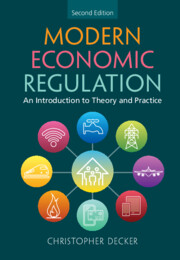Refine search
Actions for selected content:
56 results
Booming opportunities and looming challenges? Expansion strategies among finance-controlled providers in the field of Swedish eldercare
-
- Journal:
- Journal of Social Policy , First View
- Published online by Cambridge University Press:
- 23 July 2025, pp. 1-18
-
- Article
-
- You have access
- Open access
- HTML
- Export citation
8 - Welfare, Rights, and the Market in the Post-Congress Polity, 1998–2014
- from Part III - Liberalisation and Welfare in a Multi-level Democracy
-
- Book:
- Making India Work
- Published online:
- 13 February 2025
- Print publication:
- 13 February 2025, pp 173-192
-
- Chapter
- Export citation
6 - Reforming the School System
-
-
- Book:
- Politics and Knowledge Shaping Educational Reform
- Published online:
- 06 February 2025
- Print publication:
- 13 February 2025, pp 79-98
-
- Chapter
- Export citation
4 - National Identity, Publicness, and Public Space
-
- Book:
- Constitutional Intolerance
- Published online:
- 09 January 2025
- Print publication:
- 23 January 2025, pp 51-68
-
- Chapter
- Export citation
Governing on par with states: Private power and practices of political normalisation
-
- Journal:
- Review of International Studies , First View
- Published online by Cambridge University Press:
- 27 November 2024, pp. 1-20
-
- Article
-
- You have access
- Open access
- HTML
- Export citation
5 - Crisis, Collapse, and Resurgence
-
- Book:
- Fuel and Power
- Published online:
- 13 June 2024
- Print publication:
- 27 June 2024, pp 162-202
-
- Chapter
- Export citation

Mixed Oligopoly and Public Enterprises
-
- Published online:
- 09 April 2024
- Print publication:
- 06 June 2024
-
- Element
- Export citation
13 - Children’s Rights and State Responsibility
-
- Book:
- Fortin's Children's Rights and the Developing Law
- Published online:
- 08 February 2024
- Print publication:
- 29 February 2024, pp 506-539
-
- Chapter
- Export citation
5 - The New Public Management, or Enterprise Planning in Capitalist Form
- from Part II - Britain’s Neoliberal Revolution
-
- Book:
- Late Soviet Britain
- Published online:
- 14 September 2023
- Print publication:
- 28 September 2023, pp 127-172
-
- Chapter
- Export citation
3 - Is Economic Regulation Inevitable?
- from Part I
-
- Book:
- Modern Economic Regulation
- Published online:
- 25 May 2023
- Print publication:
- 08 June 2023, pp 43-68
-
- Chapter
- Export citation
14 - Rail Regulation
- from Part III
-
- Book:
- Modern Economic Regulation
- Published online:
- 25 May 2023
- Print publication:
- 08 June 2023, pp 503-546
-
- Chapter
- Export citation

Modern Economic Regulation
- An Introduction to Theory and Practice
-
- Published online:
- 25 May 2023
- Print publication:
- 08 June 2023
-
- Textbook
- Export citation
The impact of privatisation on union membership and density: A Western Australian case study
-
- Journal:
- The Economic and Labour Relations Review / Volume 25 / Issue 1 / March 2014
- Published online by Cambridge University Press:
- 01 January 2023, pp. 28-46
-
- Article
- Export citation
Precarious contours of work–family conflict: The case of nurses in Turkey
-
- Journal:
- The Economic and Labour Relations Review / Volume 31 / Issue 1 / March 2020
- Published online by Cambridge University Press:
- 01 January 2023, pp. 59-75
-
- Article
- Export citation
The privatisation of Australian electricity: Claims, myths and facts
-
- Journal:
- The Economic and Labour Relations Review / Volume 26 / Issue 2 / June 2015
- Published online by Cambridge University Press:
- 01 January 2023, pp. 218-240
-
- Article
- Export citation
2 - The Evolution of China’s Reforms of State-Owned Enterprises (1978–2020)
-
- Book:
- Between Market Economy and State Capitalism
- Published online:
- 10 November 2022
- Print publication:
- 24 November 2022, pp 13-41
-
- Chapter
- Export citation
12 - The Borders of the Supervisory Jurisdiction
-
- Book:
- Non-Statutory Executive Powers and Judicial Review
- Published online:
- 18 August 2022
- Print publication:
- 25 August 2022, pp 278-304
-
- Chapter
- Export citation
4 - Education
-
- Book:
- Arabic Sociolinguistics
- Published online:
- 01 July 2022
- Print publication:
- 07 July 2022, pp 77-91
-
- Chapter
- Export citation
Financialisation and private equity in early childhood care and education in England
-
- Journal:
- Journal of Social Policy / Volume 53 / Issue 2 / April 2024
- Published online by Cambridge University Press:
- 13 June 2022, pp. 512-529
- Print publication:
- April 2024
-
- Article
-
- You have access
- Open access
- HTML
- Export citation
Pension systems in south-eastern Europe: what worked and what did not
-
- Journal:
- Journal of International and Comparative Social Policy / Volume 38 / Issue 2 / July 2022
- Published online by Cambridge University Press:
- 28 April 2022, pp. 153-164
-
- Article
- Export citation
